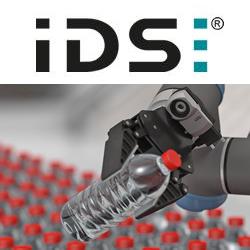Industrial Robotics Set to Hit $39 Billion by 2035, Driven by AI, Automation, and Industry Demand
Roots Analysis projects the global industrial robotics market to grow from $17.6B in 2024 to $39B by 2035. This growth reflects a broader shift toward smart automation and increased demand for efficiency and flexibility across sectors.
Industrial Robotics Market Poised for Long-Term Growth, Says Roots Analysis
There's no denying it—robots are no longer just a futuristic idea; they're now an everyday reality in manufacturing, logistics, and even mid-sized businesses looking to stay competitive. In its latest report, market intelligence firm Roots Analysis estimates the industrial robotics market will grow from $17.6 billion in 2024 to over $39 billion by 2035, at a compound annual growth rate (CAGR) of 7.49%.
That's a serious leap, and it aligns with what we've been hearing and seeing across the industry. Automation isn't just a nice-to-have anymore—it's a business imperative. Companies are under pressure to do more with less, meet increasingly customized demands, and build resilient operations that can weather unpredictable global challenges.
We're not just talking about robots doing the heavy lifting anymore (though they still do that brilliantly). What's changing is how intelligent these machines are becoming. The integration of AI, computer vision, machine learning, and real-time data processing is allowing robots to not just follow instructions—but make decisions, adapt, and work safely alongside people.
This is especially true with the rise of collaborative robots, or cobots. These machines aren't locked away in cages. They're working side by side with technicians, assembly line operators, and warehouse staff. And they're being embraced not just by global giants, but also small and mid-sized manufacturers who are realizing that automation doesn't have to mean massive capital investment.
Roots Analysis notes a growing trend in modular systems as well—robots that are flexible and reprogrammable, built to adjust with product lines and not become obsolete every time there's a shift in production.
Globally, adoption is accelerating across the board. We continue to see strong innovation coming out of Japan, Germany, and the U.S., but Asia-Pacific and Latin America are stepping up with serious investments in robotics infrastructure and automation training.
The conversation is also starting to shift toward sustainability. Companies are asking: how can we reduce waste, use less energy, and still maintain output? Robots are part of that answer. Smart automation can reduce scrap, optimize energy use, and create more consistent production cycles—all of which contribute to a smaller environmental footprint.
If you're in the industry, you're probably already feeling the pressure to adopt or expand your robotics capabilities. This report just puts numbers behind what we already know—robots are here to stay, and the smartest investments are the ones that prepare for tomorrow's challenges, not just today's.
Featured Product

3D Vision: Ensenso B now also available as a mono version!
This compact 3D camera series combines a very short working distance, a large field of view and a high depth of field - perfect for bin picking applications. With its ability to capture multiple objects over a large area, it can help robots empty containers more efficiently. Now available from IDS Imaging Development Systems. In the color version of the Ensenso B, the stereo system is equipped with two RGB image sensors. This saves additional sensors and reduces installation space and hardware costs. Now, you can also choose your model to be equipped with two 5 MP mono sensors, achieving impressively high spatial precision. With enhanced sharpness and accuracy, you can tackle applications where absolute precision is essential. The great strength of the Ensenso B lies in the very precise detection of objects at close range. It offers a wide field of view and an impressively high depth of field. This means that the area in which an object is in focus is unusually large. At a distance of 30 centimetres between the camera and the object, the Z-accuracy is approx. 0.1 millimetres. The maximum working distance is 2 meters. This 3D camera series complies with protection class IP65/67 and is ideal for use in industrial environments.
